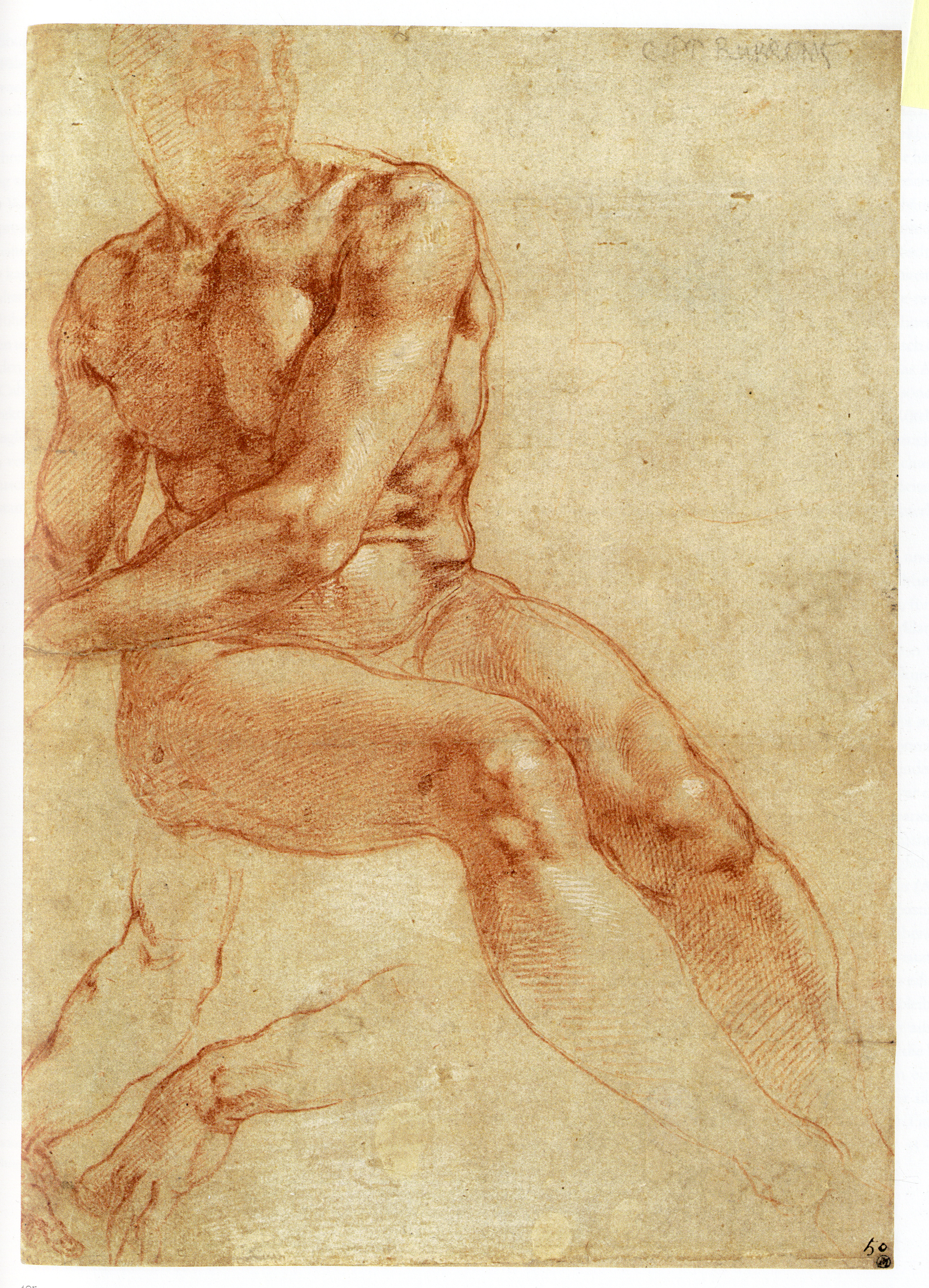
We use cookies to provide you with the best possible service and a user-friendly website.
Please find our Privacy Policy on data protection and data management here
Please find more information on the cookies here
Ground Floor - 6 April 2019 - 30 June 2019
The exhibition opening on 5 April in the Museum of Fine Arts will be the first to bring Michelangelo’s unparalleled art to the Hungarian public. Triumph of the Body: Michelangelo and Sixteenth-Century Italian Draughtsmanship displays eighty drawings by Michelangelo and his most talented contemporaries, including thirty of the master’s nude studies loaned from the world’s most prestigious collections, including the British Museum, the Uffizi, the Louvre, the Casa Buonarroti, the Albertina, and the Teylers Museum. A newly identified drawing from a London private collection, that is the earliest known drawing by the teenage Michelangelo, is exhibited for the first time here.
Following the Leonardo da Vinci exhibition, the Museum of Fine Arts hosts a show of Michelangelo’s drawings, the other genius of the Italian Renaissance. Drawing played a central role in the art of Michelangelo, who left behind an outstanding legacy mainly as a sculptor but also as a painter and architect. His drawings allow an insight into the creative process of the master’s celebrated works, since he prepared all his creations on paper.
Renaissance artists were interested above all in depicting the human body, and the male nude was pivotal to Michelangelo’s art. His powerful, dynamic nudes painted on the ceiling of the Sistine Chapel served as inspirational source for generations of artists. Therefore, twenty-nine figure studies by Michelangelo, ranging from rapidly sketched ideas to detailed, highly finished cartoons, are in the focus of the exhibition. The art-loving public can build a picture of Michelangelo’s unparalleled genius and inexhaustible creativity through the preparatory drawings for his legendary creations that form the basis of his fame, such as the ceiling paintings of the Sistine Chapel, the Medici Tombs, the lost Leda and the Swan, and the Last Judgment.
During Michelangelo’s extremely long career of more than seven decades, the world of art had been constanly changing. Therefore, the exhibition presents his draughtsmanship in the constantly varying artistic environment of the fifteenth and sixteenth centuries, alongside drawings by his most talented contemporaries and rivals, including Leonardo da Vinci, Raphael, Luca Signorelli, Jacopo Pontormo, Agnolo Bronzino, Francesco Salviati, and Rosso Fiorentino. Beyond attesting to Michelangelo’s virtuoso handling of drawing techniques, the exhibition also presents how his innovations were incorporated by his fellow artists into their own works. Instead of showing the artworks in strict chronological order, the arrangement often follows associations inspired by visual parallels, thus letting visitors enjoy their own discoveries.
Richly illustrated catalogues in Hungarian and English accompany the exhibition which presents Michelangelo’s art in the constantly changing artistic environment of the fifteenth and sixteenth centuries.
The application Michelangelo in the Sistine Chapel is available in the exhibition hall and on our homepage. Thanks to this app you can compare the original artworks with the sketches made for the frescos.
The following page contains a collection of videos that give you a glimpse into what happened behind the scenes.
Curator of the exhibition and editor of the catalogue is Zoltán Kárpáti, museologist of the Museum of Fine Arts, Budapest.
The Lead Sponsor of the exhibition is UniCredit Bank Hungary Zrt.
Corporate Partners: Volkswagen and The Ritz-Carlton Budapest
30 Michelangelo drawings
TILL 30. JUNE 2019, opening hours: Tuesday – Sunday 10:00 am – 5:45 pm, closed on Mondays
Ticket: HUF 3,200
For a long time, Pollaiuolo’s engraving and drawings served as models for the relatively small repertoire of nude figrues that Florentine painters used in a variety of ways in their works. This ambitious engraving by Antonio Pollaiuolo was intended as a demonstration piece of his unique skill as a draughtsman of human anatomy. However, he did not draw his nudes after the live model: the figures of the lively battle scene were based on a small wax model with movable arms and legs.
The virtuoso drawings by the Bolognese painter, Bartolommeo Passarotti, were highly esteemed by his contemporaries. The Persian Sibyl of the Sistine Ceiling on the Budapest sheet was outlined with a broad-nibbed reed pen and shaded with bold hatching, echoing the style of Michelangelo’s early pen-and-ink drawings. It is hardly surprising that many drawings by Passarotti were long regarded as works by Michelangelo himself.
Among the sculptors and painters copying the incomplete sculptures of the New Sacristy, was the young Venetian painter, Giovanni Battista Franco, who had worked in Rome until then, where he had made copies of all the available works of Michelangelo. He copied the Day from several angles, perhaps it was harder to find the ideal view of the male figure covering his face with his shoulder. In producing the carefully detailed drawings, Franco probably had a series of prints in mind.